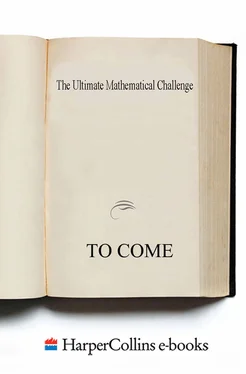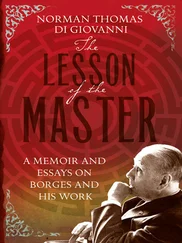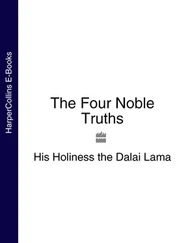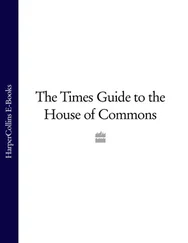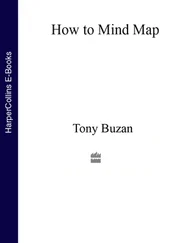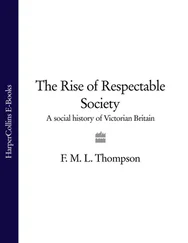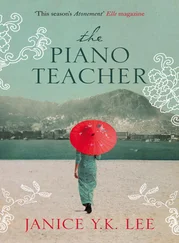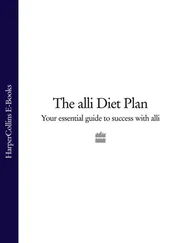You should also note that the UKMT has a ‘no calculators’ rule for all its competitions. This is because our aim is to encourage good mathematical thinking. Calculators are helpful when numerical answers are required, but using them is often a substitute for thinking. You, dear reader, are, of course, free to use calculators and other electronic devices in tackling these problems, but we think they will only rarely be of any help.
How the problems have been chosen
UKMT problems are designed for students who are currently studying mathematics. In selecting problems for this book aimed at a general reader we have mainly avoided problems that require up-to-date knowledge of the current mathematics curricula. For example, although algebra will often be useful in tackling a problem, we have selected very few problems that are explicitly about algebra. We have included some geometry problems, because geometry is such a beautiful subject. However, most of the problems can be solved using no more than a little numerical knowledge, logical thinking and native wit.
For those whose knowledge is a little rusty we have included a Glossary containing some reminders of mathematical terminology and some basic geometrical facts about angles.
Solutions
To include full solutions, with detailed explanations, to all the problems would require a book four times as large as the current volume. We have therefore generally only given short solutions, but we hope that these will let you know whether you solved the problem correctly, and will be of help if you are ever baffled.
Detailed solutions to many of the problems may be found in the UKMT publications listed below. Solutions to many of the problems, especially those from recent years, may also be downloaded (for free!) from the UKMT website: www.ukmt.org.uk
The range of UKMT competitions
We list below the different UKMT competitions from which these problems have been drawn, giving an indication of the students they are aimed at and the amount of time they are given. Which competition a student is qualified for depends on their school year. Because school years are denominated differently in different parts of the UK, for simplicity we have translated them into the standard ages of the students in these school years.
Primary Team Maths Resources (PTMR)
These are a range of different team activities designed for 10- and 11-year-old students with the aim of facilitating secondary schools in running events for their feeder schools. The activities are mostly similar to those in the Team Maths Challenge but also include some logic problems that we have used for some of our interludes.
Junior Mathematical Challenge (JMC)
Intermediate Mathematical Challenge (IMC)
Senior Mathematical Challenge (SMC)
Each of these papers is made up of 25 multiple-choice questions. The JMC is aimed at students aged 12 or 13, the IMC at students aged 14, 15 or 16, and the SMC at students aged 17 or 18. These papers are often taken by students younger than the target range. For the JMC and IMC, students are given 60 minutes, and for the SMC they are given 90 minutes.
Kangaroo Competitions
The International Mathematical Kangaroo ( Kangourou sans Frontières ) is an international competition founded in France in 1991 in which over 50 countries now take part. The idea came from the Australian Mathematics Competition, and was named the Kangaroo in recognition of this. The UKMT uses Kangaroo questions for four competitions that are open to students who do sufficiently well in the Challenges, as follows:
Junior Kangaroo for students aged 12 or 13;
Grey Kangaroo for students aged 14;
Pink Kangaroo for students aged 15 or 16;
Senior Kangaroo for students aged 17 or 18.
Each paper consists of 25 questions, for which 60 minutes are allowed. The Junior, Grey and Pink Kangaroo papers are made up of multiple-choice questions. In the Senior Kangaroo, students are asked to give numerical answers but explanations are not required.
Olympiad Papers
These papers are designed for students who do extremely well in the Mathematical Challenges. The heart of all these papers is a small number of tough questions for which fully explained answers are required. They are given the name Olympiad because they are part of a pathway that leads to the UKMT team for the annual International Mathematical Olympiad , a competition in which over one hundred countries take part.
The Olympiad paper that follows on from the Junior Mathematical Challenge is the Junior Mathematical Olympiad for students aged 12 or 13. This is a two-hour paper made up of 10 A-section questions (answers only) and 5 B-section questions (full explanations required).
There are three Olympiad papers that follow on from the Intermediate Mathematical Challenge. These are the Cayley Mathematical Olympiad for students aged 14, the Hamilton Mathematical Olympiad for students aged 15, and the Maclaurin Mathematical Olympiad for students aged 16. Each of these is a two-hour paper with six questions for which full explanations are required. (Before 2004 these papers had A and B sections.)
The Mathematical Olympiad for Girls (MOG) is for girls aged 16 or 17. It aims to encourage and inspire as many girls as possible to get involved in advanced mathematical problem solving. The paper lasts two and a half hours, and consists of five challenging mathematical problems for which full written solutions are required.
There are two British Mathematical Olympiad (BMO) papers – Round 1 and Round 2 – that follow on from the Senior Mathematical Challenge aimed at students aged 17 and 18. To qualify for Round 2, you have to do well in Round 1. The Round 2 questions are therefore very challenging. Students are given three and a half hours for these papers.
The Team Maths Challenge is an event for teams of four students aged 14 or younger. There are over 60 Regional Finals each year, leading to a National Final in June. There are four rounds: the Group Round, the Crossnumber, the Shuttle and the Relay. We have used many of the Crossnumbers for our interludes, where we explain how they work. Questions from other rounds have been used as some of our daily questions. The Senior Team Maths Challenge , which is organised in partnership with the Advanced Mathematics Support Programme, is very similar but aimed at students aged 17 and 18.
We have also included a few problems taken from the UKMT’s Mentoring Scheme . In the scheme students are given monthly problem sheets. They tackle these in their own time, with a mentor who can give them help and who comments on the solutions that are submitted. There is no element of competition.
UKMT publications
We list here the UKMT publications that cover the competitions described above. They contain full solutions to the problems and may be ordered from the UKMT website: www.ukmt.org.uk
Yearbooks
The UKMT has published a Year Book for every year from 1998–99 to 2016–17. Each Year Book includes the problems and solutions for that year’s competitions.
Mathematical Challenges
The following books contain all the papers for the Junior, Intermediate and Senior Mathematical Challenges for the years in question, together with short solutions:
Ten Years of Mathematical Challenges: 1997 to 2006 , UKMT, 2006,
Ten Further Years of Mathematical Challenges: 2006 to 2016 , UKMT, 2016.
Each of the next three books contains all the problems from the relevant Mathematical Challenge up to the date of publication, arranged by topic and difficulty. The problems are not in multiple-choice format, and the books include hints but not full solutions.
Читать дальше
